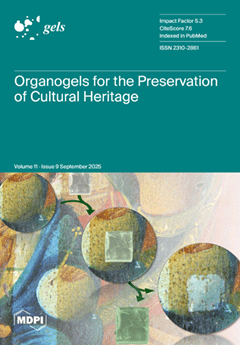In the design of gel phase change composite wall materials for solar greenhouses, the alteration of material composition could directly affect the thermal performance of gel phase change composite wall materials. In order to obtain better suitable gel phasechange composite wall material for solar greenhouses, Na
2HPO
4·12H
2O-based gel phasechange materials with different content of ingredient (Na
2SiO
3·9H
2O, C
35H
49O
29, KCl, and nano-α-Fe
2O
3) were obtained via the Taguchi method and machine learning algorithms, such as Support Vector Regression (SVR), Random Forest (RF), and Gradient Boosting Trees (GBDT). The result shows that the GBDT is more suitable for the thermal performance optimization prediction of gel phase change composite wall materials, including time cooling (TC), latent heat of phase change (ΔH
m), supercooling degree (ΔT), and phase change temperature (T
m). The determination coefficient (R
2) of time cooling (TC), latent heat of phase change (ΔH
m), supercooling degree (ΔT), and phase change temperature (T
m) by GBDT are 0.9987, 0.99965, 1, and 0.9995, respectively. The mean absolute error (MAE) coefficient percentage of supercooling degree (ΔT), phase change temperature (T
m), latent heat of phase change (ΔH
m), and time of cooling (TC) by GBDT are 0.32%, 0.25%, 0.17%, and 0.26%, respectively. The root mean square error (RMSE) of supercooling degree (ΔT), phase change temperature (T
m), latent heat of phase change (ΔH
m), and time of cooling (TC) by GBDT are 0.41%, 0.32%, 0.19%, and 0.35%, respectively. The optimal result predicted by GBDT is Na
2HPO
4·12H
2O + 5% Na
2SiO
3·9H
2O + 12% KCl + 0.2% Nano-α-Fe
2O
3 + 3% C
35H
49O
29, which was verified by experiments.
Full article






